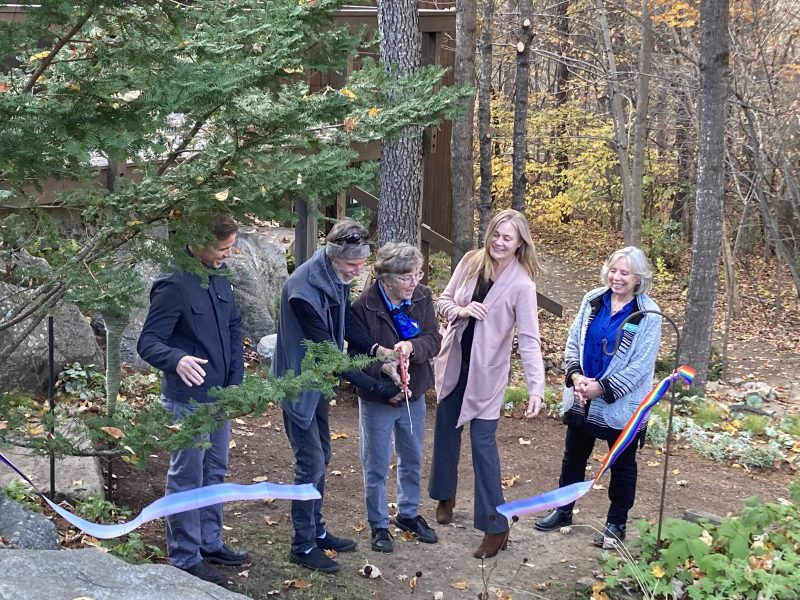On a beautiful, sunny day in early November, a large crowd could be found gathering on the paths below the Discovery Center building. They were there to celebrate a ribbon-cutting ceremony for the new Estuary Inclusion garden.
The inspiration for the garden started with a brainstorming session between Reserve staff and the Stewards on how celebrate and mark the life of Jordan Roberge, the son of Board Trustee Sheila Roberge, who was committed in his own life and work to diversity and inclusivity.
The centerpiece of the newly redone garden area is a soaring blue heron sculpture commissioned from East Kingston, N.H.-based sculptor Jeff Whittum, a frequent participant in the Art of Great Bay show and sale who works in found and salvaged metal. It is surrounded by more than 500 newly planted grasses, flowers, and herbs.
“The estuary inclusion garden was designed to engage the senses and ignite the imagination,” said Discovery Center Director Kelle Loughlin during the event. “From almost any vantage point to the garden you will see a broad and multi-layered interpretation of the Great Bay Estuary. The gentle slope and solid surface of the zig-zag path leads to a new granite stone wall constructed at a height to allow visitors using wheeled mobility aids to pull alongside and touch soft plants such as the lambs ear, and enjoy the fragrant and colorful herbs designed to be at eye level.”
“From the gentle trickle of the tributaries, interpreted using wind chimes and the water feature, the single row of Carex appalachia sedge, flows toward Great Bay, meandering and growing wider at its mouth,” she explained. “The plants chosen for the edges of the river are blue in hue and some even have a speckled watery appearance such as the Jack Frost and lungwort plants. They are all visually appealing to the eye, but plants such as the bluish-purple hyssop also attract pollinators with their beautiful and fragrant blooms. They are planted in predictable patterns, much like the species found in our salt marshes, growing where they are best suited and capable of surviving in the challenging conditions an estuary presents.”
The ribbon cutting was done by Jordan’s family, and guests wandered throughout the garden area afterward. In future seasons, the sculpture can be planted, and at its base a plaque will be installed that reads “’A life is like a garden, perfect moments can be had but not preserved except in memory’ Leonard Nimoy – In memory of Jordan Roberge.”
The garden and other accessibility work at the Center were only made possible through the AARP Community Challenge grant program, which aims to make communities more livable for people of all ages with tangible improvements. The Stewards were also thrilled to receive support from the New Hampshire Charitable Foundation through their Community Grant program, from former Reserve Education Coordinator Betsy Stevens, and from the friends and family of Paul and Sheila Roberge.
The improvements to the Center will also include the future installation of the Brava Universal Swing. The novel swing allows children of all abilities to swing in multiple ways, using arms, core, or legs; it also is designed to mimic stimming behaviors to allow children with autism to participate in an activity that is comfortable and calming for them. Alongside the swing, grab bars in the natural play area to allow accessibility for all visitors, young and old.
We welcome future visitors to explore and enjoy the beautiful new Estuary Inclusion garden and play equipment.

